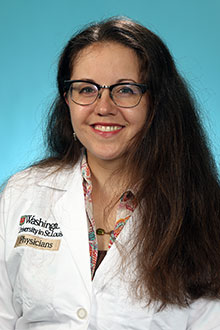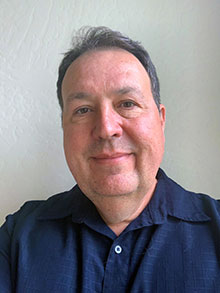Teen ‘Social Media-Induced Illness’ Requires Careful Workups
Abstract
It may be tempting to dismiss the sometimes flamboyant symptoms of “mass social media–induced illness,” but doing a full workup and learning about the teen’s life and relationships can offer insight and a path to wellness.

Psychiatrists are seeing increasing numbers of youth who have diagnosed themselves with dissociative identity disorder (DID) and other serious mental illnesses, but experts caution against the danger of oversimplifying such cases.
The TikTok hashtag #Dissociative Identity Disorder has amassed 1.7 billion clicks, according to the social media site popular with teens. Teens with similar complaints seem to follow the social media videos in waves, explained child and adolescent psychiatrist David C. Rettew, M.D., medical director at Lane County Behavioral Health in Eugene, Ore.
Some of these cases involve conversion disorder, a social contagion phenomenon marked by unconscious imitative behavior. “This is a variant of mass hysteria,” Andrea Giedinghagen, M.D., an assistant professor of psychiatry at Washington University in St. Louis School of Medicine told Psychiatric News. “Now teens can watch someone in Berlin manifesting tics or multiple personalities, and hundreds of other followers across the globe can start to manifest those symptoms.” A diagnosis might provide a sense of belonging and allow teens to fit in, she added.

Andrea Giedinghagen, M.D., said that she sees many youth who are simply in need of psychoeducation. “I find myself gently ‘de-diagnosing’ the teenagers I see in my office at least a few times a month.” For others, trauma, anxiety, or identity confusion are underlying their interest in a particular diagnosis.
Other popular teen self-diagnoses du jour include autism spectrum, attention-deficit, and bipolar disorders. The phenomenon has been dubbed mass social media–induced illness (MSMI) or even Munchausen’s by Internet, Giedinghagen wrote in an article for Clinical Child Psychology and Psychiatry in April 2022. Studies reveal that girls are particularly prone to these disorders, and there is an association with borderline personality and dysthymia.
A DID diagnosis may be particularly attractive to teens because “it’s seen as kind of cool. You can be somebody different all the time, and it gives you the freedom to be outrageous or attention getting,” Michael Rich, M.D., M.P.H., director of the Digital Wellness Lab and co-director of the Clinic for Interactive Media and Internet Disorders at Boston Children’s Hospital, told Psychiatric News.
A full workup is still needed: Some youth at his clinic were actually found to be experiencing absence seizures (formerly known as petit mal seizures) triggered by their online activity. “It might have felt like DID to them, but it was actually an epileptic episode,” Rich said.
Giedinghagen said some teens arrive at their initial consultation steeped in DID lingo, calling themselves “systems,” and frequently switch between wildly different “alters.” Yet many lack the trauma history characteristic of DID and their symptoms change over time.
Some teens appear to be intentionally feigning symptoms for attention, sympathy, or connection with their peers, known as factitious disorder. “All human beings have a basic need for attention,” Giedinghagen said. “If there’s no adaptive way to get that need met, you may start using the vocabulary of DID as a way to get that need met.”
How Self-Diagnosis Goes Awry
Giedinghagen said that she sees many youth who are simply in need of psychoeducation.

David C. Rettew, M.D., sees the risk in psychiatric diagnoses that are not fully vetted. “Adolescence is a time of identify formation, and teens may attribute too much of their identity to a psychiatric diagnosis,” he said. “These diagnoses can be difficult to remove, and they still carry significant stigma among peers and consequences down the road.
“Some kids describe their (normal) hobbies and fidgeting during a boring class, and yet they’ve latched on to psychiatric terms saying ‘I have these special interests, and I’m stimming, clearly I have autism.’ … I find myself gently de-diagnosing the teenagers I see in my office at least a few times a month.”
Rettew, the author of an article in the Journal of the American Academy of Child & Adolescent Psychiatry in October 2023, said it is understandable how teens latch on to these conditions. “All of us can recognize parts of ourselves in some of these diagnoses; we are all on the ADHD or anxiety spectrum somewhere,” he said. “Our DSM forces us to put an individual into a binary category—either you have a diagnosis or you don’t—but that’s not the way the brain works. All of these disorders exist dimensionally.”
Rettew sees several risks of teen self-diagnosing that are not fully vetted. “Adolescence is a time of identify formation, and teens may attribute too much of their identity to a psychiatric diagnosis,” he said. “These diagnoses can be difficult to remove, and they still carry significant stigma among peers and consequences down the road, for example when applying for certain jobs as an adult.” They might also lead to overtreatment or unnecessary childhood exposure to medications, all of which carry some risk, he added.
“The one upside of this self-diagnosing trend is that more teens are seeking help, even if they don’t have DID like they think they do,” he said.
Managing Self-Diagnosed Teens
Giedinghagen avoids using questionnaires with these teens. “They’re going to know what to check off,” she said. Instead she asks them to describe their life, their everyday interactions and their relationships with peers.
She takes a social media history and brings in parents/caregivers and collateral individuals whenever possible. It can be helpful to watch the illness-related social media content with the teens and point out the inaccuracies, steering them to more factual resources, she advised.
“It’s important to keep in mind that this person is coming to you with some sort of pain, with something that is wrong. It may not be what they think it is, ... but acknowledging that [pain] and holding that in mind can make it a lot easier to be charitable, open, and helpful,” she added. The key to treatment is often identifying and treating the teen’s underlying mental health needs, such as trauma, anxiety, or identity confusion, she said.
Rettew said the more complicated a clinical situation appears, the more important it is to stick to the basics:
Establish good rapport with the patient, be thorough and validate while maintaining some skepticism, and give yourself time to conceptualize.
Address the elephant in the room—ask teens if they have a specific diagnosis and treatment in mind and what research they did and where.
Reject the tendency to dismiss or deny the patient’s narrative. “Science has shown us repeatedly that virtually everything when it comes to mental functioning … comes from a complicated mashup of mutually interacting genetic and environmental factors,” Rettew said. “These environmental contributors include things such as peers and media influences, and their presence in the mix should not immediately disqualify someone’s history as undeserving.”
Sometimes these “trending presentations” are an accurate description of symptoms that the teen has long experienced and suppressed, Rettew said.
“The biggest mistake we make when we have public debates about mental health is assuming that everybody is the same, that everybody’s brain works the same way. If you can just get past that, you become much freer to meet people where they are and really embrace the complexity of our mental functioning.” ■



